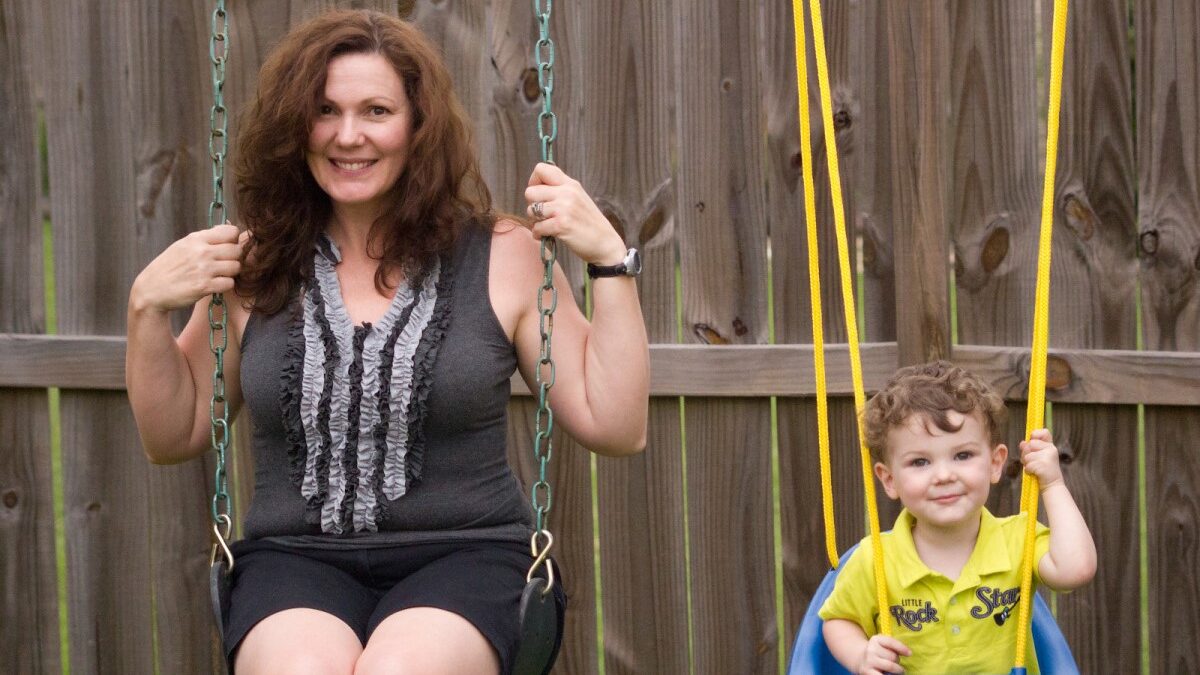
For every American who faces fertility challenges or has suffered a pregnancy loss, the first feeling is isolation. Each one thinks he or she must be the only one who suffers, since we as a society don’t talk about these issues openly and our culture does a poor job addressing topics such as death, especially infant death. Therefore many men and women struggle through infertility or pregnancy loss in silence. They tend to fade into the background, while the rest of society merrily moves on, as if nothing bad ever happens.
“Don’t Talk About the Baby” is a recently released documentary film aiming to break this social and cultural stigma. Through interviewing experts as well as men and women who suffered either infertility or pregnancy loss, the film explores “how we got to this culture of silence and what we need to do to get away from it.” Once we identify the cause of this stigma, movie makers hope this film will empower people to start talking about the baby — to “tell their stories in their own communities, and start conversations that will change how we talk about loss and infertility.”
It is the first feature-length film directed by Ann Zamudio. She suffered a miscarriage while in film school. Later, as she tried to start a family, she came to grasp the challenges of fertility. Her experience and passion about women’s issues prompted her to do a film project on this subject.
Initially she planned to focus only on miscarriages. She reached out to Star Legacy Foundation, a non-profit organization dedicated to preventing stillbirth and infant death. The foundation got the word out and had many families signed up for interviews to share their stories and honor their precious babies on camera. This taught Ann something she didn’t know before — a significant portion of pregnancy losses in the U.S. are stillbirths, something she thought had been consigned to history long ago.
As she dug deeper into the subject of fertility and pregnancy loss, she decided to cover all three subjects — miscarriages, infertility and stillbirth — in one film, although on the surface they seem to be different topics. She does a good job of weaving these topics together by a common thread: the social stigma of very few talking about it openly.
The film identifies some of the root causes of the social stigma and the silence. For one, people who struggle through these issues don’t want to talk about it because they feel ashamed. One mom who struggled with infertility mentioned that she felt her body has betrayed her. Having a child seems so easy for so many people and it is something we women are born to do.
When you can’t have a child, or were pregnant but lost your child during pregnancy or delivery, you feel your body has failed you and you, in turn, failed to be a full woman. It’s as if life gave you an “F” for a supposedly very easy test. One mom in the film mentioned that after she lost her daughter to stillbirth, one word she said repeatedly was “sorry” even though no one blamed her. She said “sorry” to her husband, to the grandparents, and to her living children, as if she is somehow at fault for this tragedy.
Besides feeling ashamed, many women who struggled through miscarriages and stillbirths also feel guilty. We all like to believe we have full control of our bodies. So when a loss occurs, our first instinct is to search for something we did wrong to cause this to happen. One of the common myths about miscarriages and stillbirths is that the mom-to-be must have done something wrong. Every woman who experiences pregnancy loss blames herself — did I exercise too much or not enough? Did I eat something bad? Should I have worked less and rested more?
The film does a good job debunking this myth. One doctor in the film explained that more than half of early miscarriages (less than 12 weeks gestational age) are caused by chromosome abnormalities; about 50 percent of stillbirths are unexplained. Miscarriages and stillbirths can happen to any woman, including those who are in perfect health, eat right, and exercise regularly. The simple truth is that pregnancy loss is sometimes beyond our control.
Another strength of the film is that it makes a point to show there is a great deal of diversity in Americans who struggle with infertility and pregnancy loss. These people’s testimonies are authentic and powerful. Their stories demonstrate infertility and pregnancy loss are not a race issue, not a money issue, and not even an access to health care issue. Tragedies have happened to many American men and women from all sorts of backgrounds and all kinds of ethnic groups.
If shame and guilt explain why people who struggle with infertility and pregnant loss remain silent, the main reason the rest of society chooses not to talk about these topics is because we don’t know how. We are uncomfortable to be around people who experienced pregnancy loss. We don’t know what to say.
Regarding their lost children, we don’t know how to relate to someone we’ve never met and how to talk about someone whose life was so brief. Therefore, we either avoid the subject completely or repeat common clichés that do more harm than good. In the film, many women gave examples of hurtful clichés they have heard over the years: “It happened for a reason;” “It’s part of God’s plan;” “Your child is in a better place;” “You are still young, just try again;” and “At least you still have a son or daughter.”
So if clichés are the wrong things to say, what are the right things to say or do when you encounter someone who lost a child? All parents appearing in the film said they wanted other people to say their babies’ names and to hear their stories. Like other parents with living children, parents who lost children are eager and proud to share their memories of their angels.
One segment of society that is especially poorly trained to talk about pregnancy loss is the group who deals with it the most — doctors, nurses, and staff at hospitals and birth centers. They are usually the first responders to these types of tragedies, but many are not trained in the right things to say.
Several medical professionals who appeared in the film also shared that they are not well trained to deal with the stress associated with losing their patients’ babies. Many hospitals and birth centers only have brightly decorated areas to celebrate a new birth, but they don’t have a place for bereaved families who don’t get to take home a living, breathing baby.
There are encouraging signs that changes are coming. More and more hospitals and birth centers have established bereavement teams to focus on taking care of families who experience a loss. Organizations such as the Wish Bone Foundation offer training to nurses and medical staff on how to deal with these delicate and emotional situations.
One area that hasn’t seen much change is that of nurses and doctors being reluctant to talk to pregnant women about the possibility of pregnancy loss. Their reason is that they don’t want to scare women. But several women in the film said information is power. Women want to be educated about pregnancy loss. Since pregnancy loss can happen to anyone, no woman should encounter it unaware, unprepared, and alone.
“Don’t Talk about the Baby” has done our society a service by raising awareness on pregnancy loss and infertility. This is why I highly recommend you watch it. I hope you don’t watch it alone. Invite your friends and family to watch it with you. Have a discussion afterwards. It’s time to remove the stigma and break the silence that has shrouded miscarriages, stillbirth, and infertility for too long.
Remember: One in 4 pregnancies ends in miscarriage, 1 in 160 deliveries result in stillbirth, and 1 in 8 couples struggles with infertility. Tragedy can happen to anyone. Let’s talk about the baby, now.









